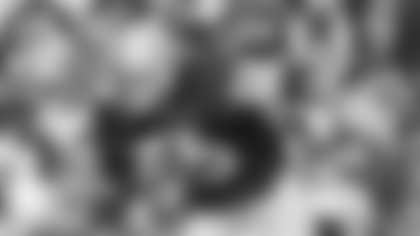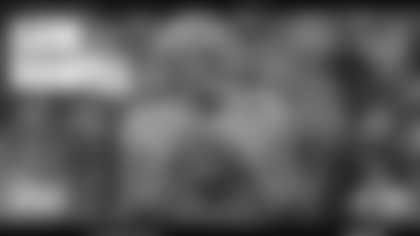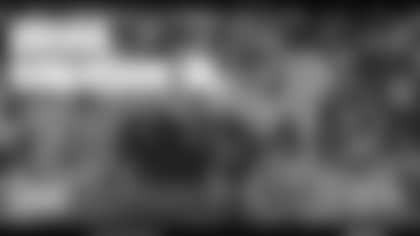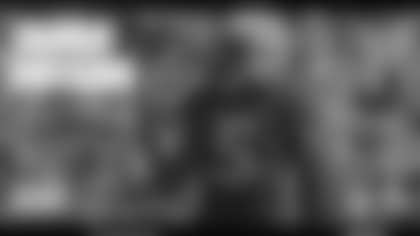Chris Hanburger was not the most talkative of Redskins -- he barely uttered a word to reporters, often saying "no comment."
Hanburger was more sociable on the field, where he went out of his way to greet ball carriers – however unceremoniously.
A featherweight of a linebacker, he specialized in brutalizing foes with vicious clothesline tackles. Instead of hitting ball carriers below the waste textbook-style, the intimidator regularly tackled high, driving his powerful forearms into players to knock them off their feet.
He took no mercy, hence his nickname "The Hangman."
"He would go a whole game and not make a tackle below the jaw line," NFL Films President Steve Sabol said. "That was a legal move in the late 1960s and early 1970s. We have shots of him decapitating (Cowboys quarterback) Don Meredith.
"He would come in on a blitz and get you right around the throat. Few players in NFL history are so distinctive that a move or style of tackling is named after them, like Fred `The Hammer' Williamson of the Chiefs."
Hanburger denied being especially ferocious.
"I don't know that it was ferocity," he said. "If you can eliminate the guy and do it legally, then your day should be easier because whoever replaces him shouldn't be as good as he is. It was easier for me to come into somebody high because I had a little more leverage.
"My philosophy was if you don't hit anybody, you can play forever because you're never going to get hurt. I just tried to take angles away from people, and I didn't get nailed head-on if I could avoid it."
Hanburger was one of the top outside linebackers of his era -- and he finally earned acknowledgement from the NFL on Saturday when he was elected to the Pro Football Hall of Fame.
In 14 seasons (1965-78) all in Washington, he made the Pro Bowl nine times, the most in Redskins history.
Positioned mostly on the weak side, he was a three-time All-NFL and four-time All-NFC player. He intercepted 19 passes and recovered 12 fumbles, and scored five touchdowns, two on interception returns and three off of fumble recoveries.

Aside from statistics, Hanburger possessed a brilliant football mind and phenomenal instincts for the game.
He called the Redskins' defensive signals from 1973-77 and was reputed as a defensive quarterback for head coach George Allen, a defensive genius himself.
One teammate said observing Hanburger's decisions during games "was like watching a great chess player making moves to counteract what the offense was doing."
"Chris Hanburger put us in more correct defenses than you could shake a stick at," said Dave Butz, a Redskin defensive tackle who played with him for several seasons. "He knew 125 different audibles. He knew all the defensive line calls, as well. He was the general."
"He was at that time the smartest player in the league," said John Hannah, a Hall of Fame offensive tackle for the New England Patriots from 1973-85. "We did everything we could to try to eliminate him from the play. We knew if we didn't neutralize him, then we had less of a chance of winning."
The son of a career U.S. Army officer (perhaps the reason for his ornery personality), Hanburger spent two years in the Army before starting his college career at North Carolina. He developed into an All-Atlantic Coast Conference linebacker and was an honorable mention All-American.
With apparently little clue of the huge returns they would get from him, the Redskins drafted Hanburger in the 18th and final round in December 1964. He was the 244th player selected out of 252.
Hanburger was soon being touted as one of the best rookie linebackers to join the Redskins since Chuck Drazenovich in 1950. He excelled on special teams and broke into the starting lineup at linebacker in the sixth game of the season.
Steve Gilmartin, the Redskins' radio play-by-play voice at the time, said the hard-hitting Jimmy Carr, then in his ninth season, taught Hanburger how to play weak side linebacker.
Hanburger made the Pro Bowl for the first time in 1966, followed by appearances in the next three seasons. Redskins Hall of Fame linebacker Sam Huff, who played with him for four of his first five seasons, saw greatness in No. 55.

"He was so quick off the ball, and he was a great blitzer who would go and get the quarterback," Huff said. "Nine Pro Bowls tells you that guy could play."
Hanburger returned to the Pro Bowl in 1972, probably the best season of his career. He intercepted four passes, scoring one touchdown, and was named NFC Defensive Player of the Year and a unanimous All-Pro, as the Redskins' dominant defense led the team's march to Super Bowl VII. That season kicked off a five-year streak of Pro Bowls for him.
All along, Hanburger proved to be rugged and durable. Beginning in 1968, he started 135 straight games, an amazing stretch that ended in 1977 after he had an appendicitis operation.
He compensated for his size – the Redskins listed him at 218, but he dropped to as low as 200 at times – by being remarkably quick and agile. He specialized in blitzing because he was so fast at darting past offensive linemen and blocking backs, often leaving them flat-footed; one of his teammates called him "quick as a cat."
"Opponents never knew what he was going to do, where he was coming from," said Brig Owens, a Redskin safety who teamed with Hanburger for 12 seasons. "But they knew if he was coming, he was coming fast. Chris was very strong for his size. He could beat you with finesse or power, or he could throw you off-balance or roll back over you."
Michael Richman is the author of "The Washington Redskins Football Vault" and "The Redskins Encyclopedia," the two most comprehensive accounts of the history of the storied franchise. His web site is **www.redskinshistorian.com*.*






